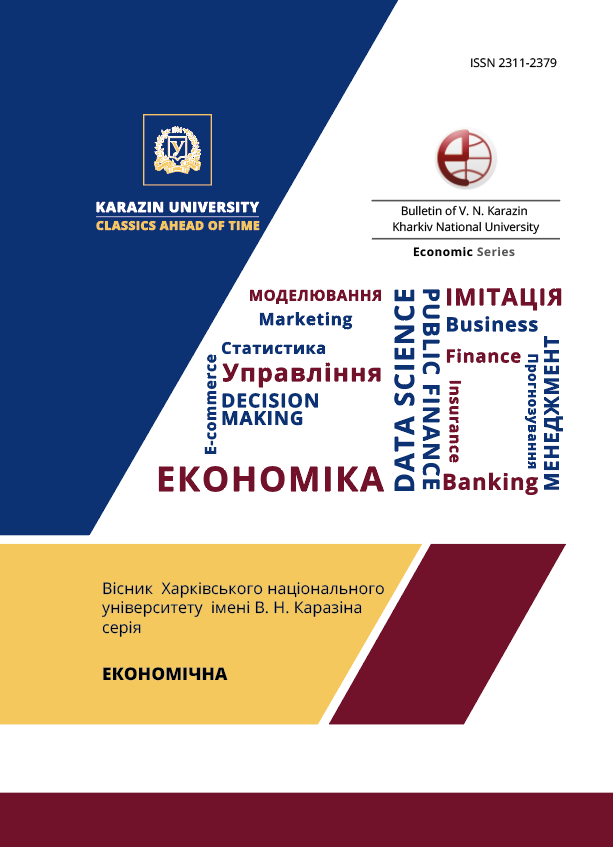Virtual assets of the distributed register
Abstract
This publication focuses on the definition of “virtual assets of a distributed registry” as an economic category. Analysis of the term showed a lack of unity in the definition. The opportunities provided by the deployment of virtual assets in a distributed registry are new but potentially effective. Virtual assets can be distributed or unallocated registry assets, secured or unsecured. Among the virtual assets of the distributed ledger: tokenized assets and cryptocurrencies. Accordingly, these are types of virtual assets that exist exclusively in the form of a record with an information identifier. But in the case of a tokenized asset, this information is derived from the original asset. And in the case of a crypto asset, this information is not derived from the primary asset. The stakeholders of the virtual assets market are individuals, miners, mining pools, which carry out the storage, exchange, transfer, provision of intermediary services. Disadvantages of the introduction of virtual assets of the distributed register are the possibility of anonymous transfers, complicated process of identification of stakeholders in the virtual assets market, the possibility of financial speculation, money laundering, difficulties with taxation. The advantages include relatively low transaction fees, their irreversibility and rapid validation. Any changes to the data in the chain of blocks are possible only when stakeholders confirm the legitimacy of transactions in accordance with general rules and protocols. This technology prevents data loss because all network members keep an up-to-date, up-to-date copy in encrypted form. The use of blockchain eliminates the possibility of making changes to the data, so the database is considered relevant at the time of access. Data is stored on different servers, data cannot be processed with expired dates, changes are made in real time and it is impossible to forge them. It is noted that the introduction of virtual assets of the distributed register in order to stimulate economic growth requires a joint effort of the science sector, education sector, IT sector, financial sector, the sector of state regulators. The possibilities of distribution register technologies are constantly growing and opening new perspectives.
Downloads
References
Kud, A., Kucheryavenko, A., Smyichok, E. (2019). Digital assets and their economic and legal regulation in the light of the development of blockchain technology: monograph. Harkov : Pravo. (in Russian)
Cherevko, K. (2019). Virtual money in terms of Ukrainian legislation. Bulletin of the Criminological Association of Ukraine, Special issue, 121-130. (in Ukrainian)
FATF (2020). Virtual Assets Red Flag Indicators of Money Laundering and Terrorist Financing, Paris, (France). Retrieved from http://www.fatf-gafi.org/media/fatf/documents/reports/Guidance-RBA-Virtual-Currencies.pdf
Kud, A. (2021). Comprehensive classification of virtual assets. International Journal of Education and Science, 4(1), 52-75. doi: https://doi.org/10.26697/ijes.2021.1.6
Ovcharenko A. (2020а). Virtual assets as objects of financial monitoring. Bulletin of Zaporizhzhya National University. Legal sciences, 3, 98-103. (in Ukrainian)
Law "On Virtual Assets". Retrieved from https://www.rada.gov.ua/news/Novyny/213503.html
FATF (2019). Guidance for a Risk-Based Approach to Virtual Assets and Virtual Asset Service Provider, Paris, (France). Retrieved from www.fatf-gafi.org/publications/fatfrecommendations/documents/Guidance-RBA-virtual-assets.html
FATF (2021). International Standards on Combating Money Laundering and the Financing of Terrorism & Proliferation, Paris, (France). Retrieved from www.fatf-gafi.org/recommendations.html
FATF (2020). Money Laundering and Terrorist Financing Red Flag Indicators Associated with Virtual Assets, Paris, (France). Retrieved from http://www.fatf-gafi.org/publications/fatfrecommendations/documents/Virtual-Assets-Red-Flag-Indicators.html
The Law of Ukraine "On Prevention and Counteraction of Legalization (Laundering) of Criminal Proceeds, Financing of Terrorism and Financing of Proliferation of Weapons of Mass Destruction", №361‑IKh (2019). Retrieved from https://zakon.rada.gov.ua/laws/show/361-20#Text
Official Internet representation of the President of Ukraine Volodymyr Zelensky. (2021). The head of state returned the law on virtual assets to the parliament with his proposals. Retrieved from https://www.president.gov.ua/news/glava-derzhavi-povernuv-do-parlamentu-zakon-pro-virtualni-ak-70949
Road map of the development of the sphere of virtual assets in Ukraine. (2021). Retrieved from https://thedigital.gov.ua/news/sformovano-dorozhnyu-kartu-rozvitku-sferi-virtualnikh-aktiviv-v-ukraini
Ovcharenko, A. (2020b). Legal regulation of virtual assets and cryptocurrencies in Ukraine: current state and prospects. Legal scientific electronic journal, 4, 200-202. (in Ukrainian)

